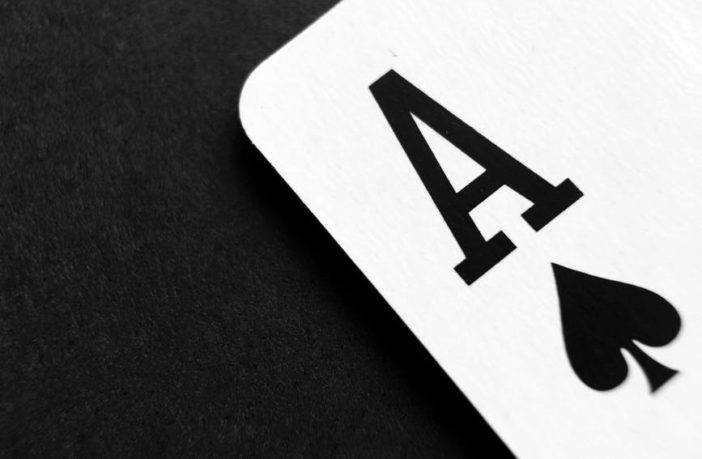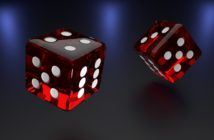In the last few decades, Texas Hold’em has become one of the most popular games in the world. However, you may not know that poker originated almost two centuries ago.
The original poker concept spread out into dozens of games and hundreds of variations, ranging from stud- to draw-style dealing and high and low winning hands.
Some of these classics still exist today, with slight alterations, as some of the most popular types of poker. That is why if you want to be a poker pro then you have to learn more than Texas Hold’em.
Read on to discover how to play the top 5 poker games to win big.
Your Invitation to the Best Online Pokies in Australia
Like a punt on the slot machines?
Our top rated slots for October 2019 are the smash-hit online pokie sites: Ruby Fortune and Jackpot City Casino.
These sites include some impressive matched bonuses – up to $750 and $1600 respectively! With the potential for some seriously big wins, here’s your chance to get a piece of the action:
1. Seven-Card Stud
This is one of those poker variants that take patience and attention to detail. It is certainly a game that proves poker is a game of skill, not just luck.
So, you might be surprised that Stud was the most popular game before Hold’em rose to stardom.
It is also easy to learn if this is your first time playing or you are used to Texas Hold’em.
Unlike Hold’em there are no community cards and no flops. Your hand is created by the seven cards in front of you.
Terminology
There are some special technical terms to be aware of in Stud poker.
- Bring in: This is the initial bet made by the lowest cardholder and subsequent betting in the first round of bets.
- Complete: Instead of bringing in, the lowest cardholder can raise in increments of $10.
- Hole Cards: The two down-facing cards dealt first.
- Door Card: The one down-facing card dealt third.
- Fourth Street to Sixth Street: Each up-facing card dealt after the first 3 cards.
- Seventh Street or River: The last card dealt facing down.
Knowing these terms will keep you informed when the players refer to their hands or betting cycles.
Dealing
Each player will get a total of seven cards. The first two cards are dealt facing down. The next one is facing up. These are your initial three cards before betting begins.
After the dealer burns one card (discards the top card on the deck), another card is dealt facing up. This repeats two more times to give you a total of four cards facing up.
The last card is dealt facing down, which will complete your hand. You will use five out of the seven cards to make your best five-card poker hand.
Betting
Most Stud poker is played with a limit on betting. This means that you can’t bet all your chips at once.
Before the first three cards are dealt, each player places an ante in the pot. The betting begins with whoever has the lowest door card showing. This player has to either bring in or complete the bet.
Betting continues clockwise as each player can now fold, call, or raise.
The rest of the rounds of betting occur after each street card, beginning with the person who has the highest poker hand.
2. Pot-limit Omaha
If you are looking for poker card games that resemble Texas Hold’em then Pot-limit Omaha is the closest.
The main difference is that you use four pocket cards instead of two.
This style of poker is more complex and not for beginners as it has many possible scenarios to get beat. Some players don’t follow proper poker etiquette and catch their winning hand on the last card.
Terminology
Know these important terms to thrive at Omaha.
- Pocket Cards: The four cards dealt to you facing down.
- Community Cards: The cards dealt facing up in the center of the table for each player to use in their hand.
- Flop: The first three community cards facing up.
- Turn: The fourth community card dealt facing up.
- River: The last community card dealt facing up.
- Small Blind: Half of the forced bet that rotates to the person left of the dealer.
- Big Blind: The complete forced bet that rotates to the person left of the small blind.
You may notice that many of these definitions are similar to Hold’em.
Dealing
Each player receives four pocket cards face down. Just like in Hold’em, the dealer burns one card before laying three cards face up in the center of the table. This is repeated for the turn card and the river card.
Players must use two out of the four pocket cards and three community cards to make the best five-card poker hand.
Betting
Since this game is pot limit, you can’t go all in like No-limit Hold’em. And unlike Stud, you can raise as much as the pot and the amount of any raises before you.
Betting cycles work like Hold’em. The first money in the pot is the small and big blinds before the cards are dealt.
Once the pocket cards are dealt, the person to the left of the big blind can either call the big blind amount, fold, or raise to the pot limit.
The small blind can add the second portion of the blind to call, and the big blind can check if there were no raises.
After the flop, the small blind acts first by either betting or checking. The betting rotates clockwise and repeats twice more after the turn and finally the river.
3. Five-Card Draw
This classic should be on any poker games list and it probably was when you were a kid. This game is how most people learn how to play poker.
As a kid, you might have played with fake money so the stakes weren’t too high. With real money, the game is risky since you rely mainly on bluffing and calling bluffs. You will need a good poker face to win this game.
This is because you can’t see any of your opponent’s cards and there are no community cards.
Terminology
You may be familiar with some of these terms.
- Draw: The new cards that replace your discharged cards after the first round of betting.
- Bluff: Pretending like you have a good hand when you don’t.
- Ante: A post-deal wager placed by all the players.
- Small Blind: Half of the forced bet that rotates to the person left of the dealer.
- Big Blind: The complete forced bet that rotates to the person left of the small blind.
This game is all about the draw, so it is based on luck and playing mind games.
Dealing
Players are dealt five cards facing down. There are no community cards.
You have the option of discarding up to three of your original cards or up to four cards if you have an ace. You must keep the ace if you discard four cards.
Your new cards will complete your final hand.
In some friendly games a wild card, usually a two, is created to make the game more interesting.
Betting
Some Five-card Draw games begin with an ante bet that is placed before the cards are dealt. Other Draw games play using small and big blinds.
If an ante is used, then the person to the left of the dealer makes the first bet after the cards are dealt. Another round of betting occurs after the draw.
When using blinds, the person to the left of the big blind will call or fold first. The small blind will complete their bet, fold, or raise, and the big blind can check, fold, or raise.
4. Razz
If you like Seven-Card Stud then you will enjoy different types of poker like Razz. It works the same way as Stud except your goal is to get the lowest hand possible.
So, in the case of Razz, aces are low and the best hand is a 5, 4, 3, 2, and ace. You also do not want a flush or a straight as they do not beat anything.
Terminology
The terminology is similar to Stud. The exception is the starting bets.
- Bring in: This is the initial bet made by the highest cardholder and subsequent betting in the first round of bets.
- Complete: Instead of bringing in, the highest cardholder can raise in increments of $10.
See Seven-Card Stud terminology for a complete breakdown.
Dealing
The cards are dealt just like Stud with two hole cards down, one door card up, three street cards up, and one final street card down.
You will make your best hand out of the lowest five out of your seven cards.
Betting
Betting also works the same as in Stud except for who begins the betting. Before the street cards, the person with the highest door card will bring in or complete the bet.
The rest of the betting rounds start with the person who has the lowest poker hand.
5. Omaha Hi/Low
Some types of poker games like Omaha Hi/Low split the pot between the highest and lowest poker hand. This makes the game fun yet challenging.
You should read about how to play Omaha before attempting Hi/Low. See the terminology for Omaha to learn terms of Hi/Low.
In this game, the dealing and betting of the cards are also the same as in Pot Limit Omaha. It uses limit betting and blinds to start the game.
The main difference in Hi/Low is the winning hand. The pot splits equally between the highest and lowest hands. Sometimes no one qualifies for a low hand since an eight or lower high card is needed to be considered a low.
Practicing Different Types of Poker
Now that you know how to play different types of poker it is time to practice. The best place to get aquatinted with new games is to play online.
Read our blog on playing poker online to start mastering your skills.







